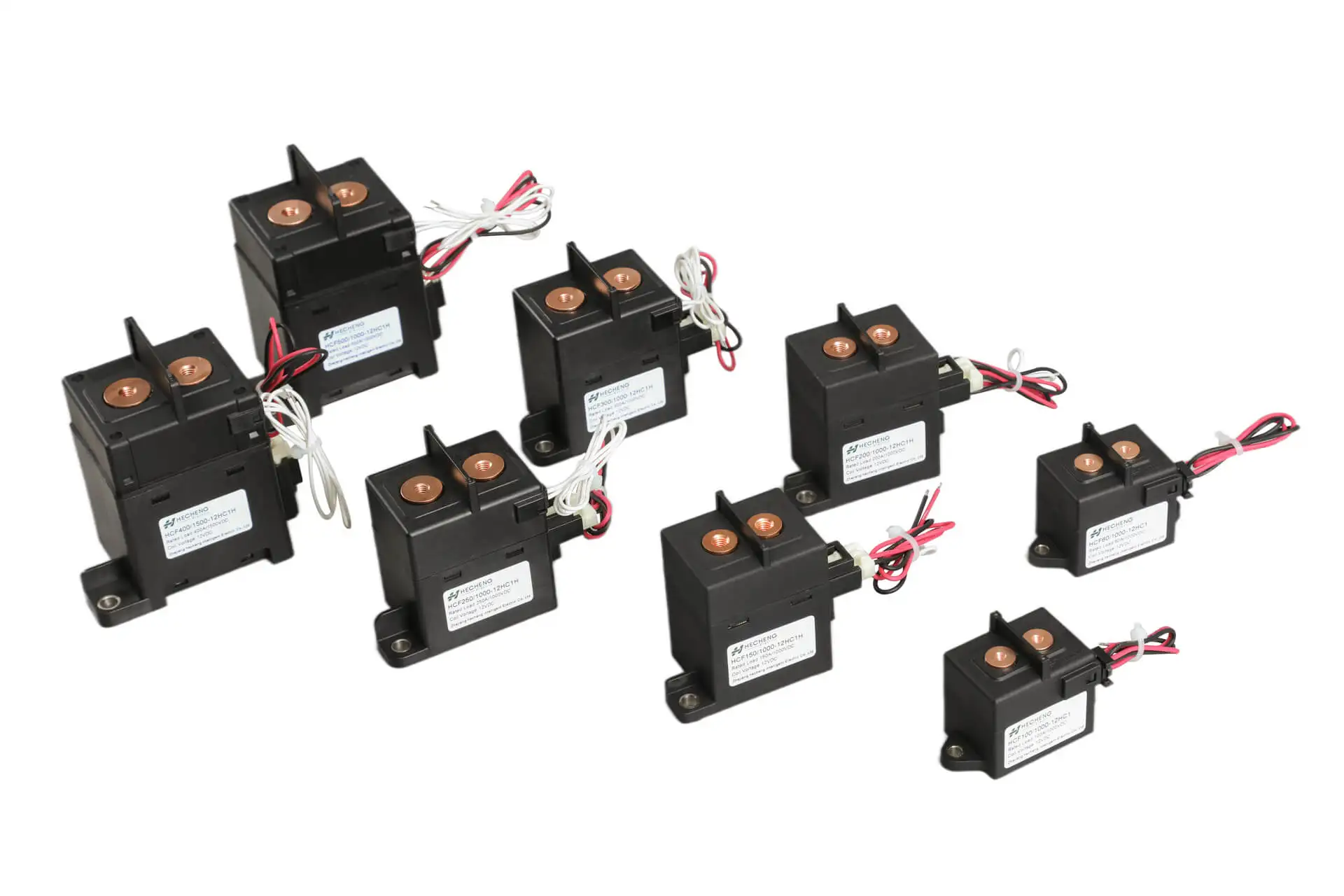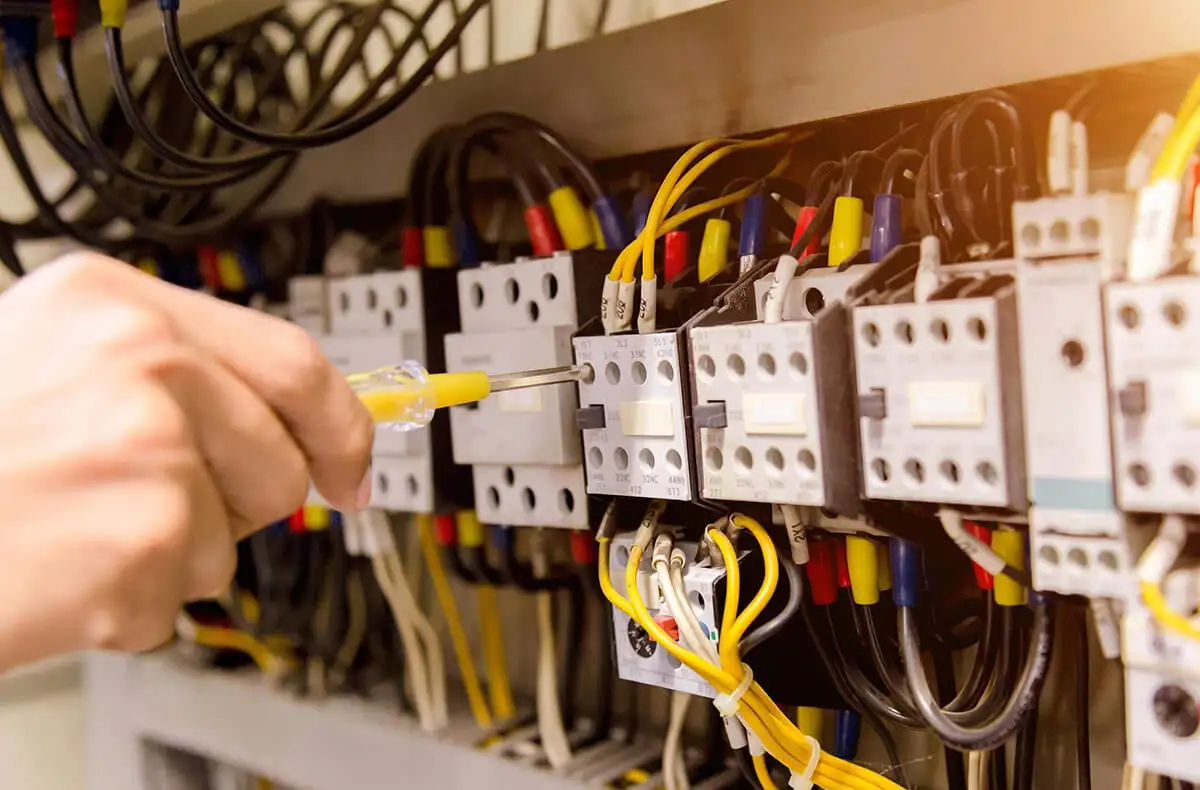Contactors are widely used components. Although it is a simple component, it is technically complex. The reason for this is that contactors are not governed by any simple engineering principles, and it encompasses different aspects of the complexity of engineering technology, intrinsically linked to electromagnetic, material, mechanical and other influences.
DC sealed contactors began in the U.S. space station program and the “Comanche” helicopter program (1983) after years of development has a wide range of civilian applications. High-voltage contactors are the key safety devices for new energy vehicles, which are widely used in new energy vehicles, charging piles, photovoltaic, UPS power supply and other related industries, based on the development of the latest advanced technology and precision equipment with a technological threshold.
High voltage DC contactors exist on the market in two technology lines:
Epoxy Resin High Voltage DC Contactors
One is to Tyco, SCII, YM as the main representative of the epoxy resin for curing sealing form, the arc extinguishing cavity consists of a plastic shell, in the arc extinguishing chamber filled with a certain pressure of protective inert gas, the use of magnetic blowing arc extinguishing form.
Due to the epoxy potting seal technical route does not need to use vacuum brazing furnace, laser welding machine and other expensive special equipment, at the same time, due to the use of high-temperature vacuum brazing, the material requirements of the parts do not need to make special requirements, the entire production of the product technology and process routes are simple, the cost is lower.
Ceramic Sealed High Voltage DC Contactors
The second technology route is represented by Panasonic, GuoLi, LS ceramic package products, this product contactor using vacuum brazing with ceramic shell construction arc extinguishing chamber, the arc extinguishing chamber for vacuum or back to charge a certain pressure of protective inert gas.
This technical route of the product production process is complex, requiring specialized process equipment such as high-temperature vacuum brazing furnace, laser welding machine and other equipment. In order to ensure that the brazing of the entire product electrical properties, mechanical properties and sealing performance of the arc extinguishing chamber, the product of the relevant parts of the material and size of the higher requirements. Therefore, the entire process equipment system is expensive, complex process technology route, the relevant supporting process equipment requirements are more, higher production costs.

Get Your High Voltage DC Circuit Protection Solution
High Voltage DC Contactor, High Voltage DC Fuse Manufacturer for New Energy Industry
They differ in performance and application, and the following is a comparison of their advantages and disadvantages to:
Advantages of ceramic high voltage DC contactors:
- Good high-voltage resistance: ceramic materials have good insulating properties and can withstand higher voltages, so ceramic high-voltage DC contactors are suitable for use in high-voltage DC circuits.
- Strong corrosion resistance: ceramics have better chemical resistance and less effect on corrosive media such as acids and alkalis, so ceramic high voltage DC contactors can be used in harsh environments.
- High Reliability: Ceramic high voltage DC contactors are sealed with ceramics, which has good encapsulation reliability and can effectively prevent dust, moisture and other impurities from entering the interior, which improves the reliability of the contactors.
Disadvantages of ceramic high voltage DC contactors:
- Heavier: Due to the nature of ceramic materials, ceramic HVDC contactors are relatively heavy, which may limit their use in certain application scenarios.
- Higher cost: Ceramic materials are more expensive to produce, so ceramic HVDC contactors are usually more expensive.
Advantages of epoxy resin high voltage DC contactors:
- Lightweight design: Compared to ceramic HVDC contactors, epoxy HVDC contactors are typically lighter and more compact, making them suitable for applications where weight is critical.
- Relatively low cost: The production cost of epoxy resin material is low, so the price of epoxy resin high voltage DC contactor is relatively more reasonable.
- High insulation: epoxy resin has good insulation properties, which can effectively isolate high voltage and improve the safety of the contactor.
Disadvantages of epoxy resin high voltage DC contactors:
- Relatively poor high-temperature resistance: Compared with ceramic materials, epoxy resins have poor high-temperature resistance, so there may be some limitations when used in high-temperature environments.
- Weak corrosion resistance: relative to ceramic materials, epoxy resin has poor chemical resistance, for some corrosive media may have a certain effect.
In summary, the appropriate type of contactor needs to be selected based on the specific application scenario and requirements. If working in high temperature or corrosive environments, ceramic-sealed contactors may be more suitable; while in scenarios with high lightweight requirements and relatively low cost, epoxy contactors may be more suitable.
As a specialized manufacturer of HVDC contactors for many years in the industry, HIITIO’s product list offers a wide variety of HVDC contactors options, including Ceramic HVDC contactors and Epoxy HVDC contactors. You can view our products by following the links below:
Precision engineered and rigorously tested, these products are designed to provide high quality, reliable and safe solutions to meet your needs. Regardless of the type of HVDC contactor you choose, we are committed to providing you with the best products and services available.




